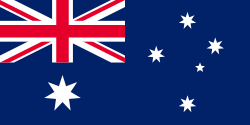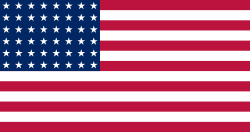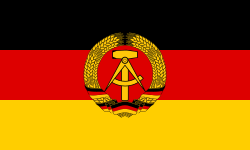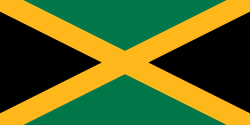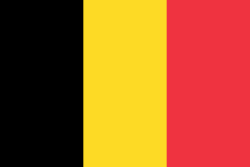Betty Cuthbertová
| Betty Cuthbertová | |
|---|---|
 | |
| Osobní informace | |
| Narození | 20. dubna 1938 Sydney |
| Úmrtí | 6. srpna 2017 (ve věku 79 let) Mandurah |
| Stát | |
| Výška | 169 cm |
| Kariéra | |
| Disciplína | 100 m, 200 m, 400 m |
| Účasti na LOH | 1956, 1960, 1964 |
| Některá data mohou pocházet z datové položky. | |
| Přehled medailí | ||
|---|---|---|
| zlato | Melbourne 1956 | běh na 100 m |
| zlato | Melbourne 1956 | běh na 200 m |
| zlato | Melbourne 1956 | štafeta 4×100 m |
| zlato | Tokio 1964 | běh na 400 m |
Elizabeth Alyse „Betty“ Cuthbertová, nepřechýleně Betty Cuthbert (* 20. dubna 1938 Sydney – 6. srpna 2017) byla australská atletka, čtyřnásobná olympijská vítězka, v Austrálii přezdívaná Golden Girl (česky Zlatá holka).
V roce 1956 se konaly letní olympijské hry v Melbourne a ona se stala jejich první domácí vítězkou, když vyhrála běh na 100 metrů. K tomu přidala ještě další dvě vítězství v běhu na 200 metrů a ve štafetě na 4×100 metrů. Od nadšených fanoušků dostala přezdívku Golden Girl.
Zranění zhatilo její ambice na následující olympiádě v Římě, ale na hry do Tokia znovu dorazila ve výborné formě a vyhrála závod na 400 metrů, který později označila za jediný dokonalý závod své kariéry.[1] Tato disciplína byla v Tokiu vypsána vůbec poprvé do olympijského programu.
Překonala 16 světových rekordů na tratích od 60 m do 440 yardů a ve štafetách.[2]
V roce 1969 u ní lékaři diagnostikovali roztroušenou sklerózu a musela se podrobit dlouhé léčbě, zároveň se ale aktivně zapojila do propagace výzkumu metod léčby této choroby.[3] Upoutaná na invalidní vozík se zúčastnila i slavnostního zahájení dalších olympijských her na australské půdě v roce 2000 v Sydney.
Byla vyznamenána Řádem britského impéria (1956) a Řádem Austrálie (2018).[3][4]
Odkazy
Reference
- ↑ Betty Cuthbert : The Only Winner of 100, 200 And 400 Meters [online]. Mezinárodní olympijský výbor [cit. 2008-04-15]. Dostupné online. (anglicky)
- ↑ DEMETROVIČ, Ernest, a kol. Encyklopedie tělesné kultury. Svazek 1. Praha: Olympia, 1988. Kapitola Cuthbertová, Elisabeth, s. 96.
- ↑ a b LAND, Clare. Cuthbert, Betty [online]. Australian Women, 2002-09-16, rev. 2007-04-13 [cit. 2008-04-15]. Dostupné online. (anglicky)
- ↑ honours.pmc.gov.au [online]. [cit. 2024-07-16]. Dostupné online.
Literatura
- CUTHBERT, Betty. Golden girl : an autobiography. Sydney: Strand Publishing, 2000. 173 s. ISBN 187-682-5251. (anglicky)
Externí odkazy
 Obrázky, zvuky či videa k tématu Betty Cuthbertová na Wikimedia Commons
Obrázky, zvuky či videa k tématu Betty Cuthbertová na Wikimedia Commons - Betty Cuthbertová na stránkách Světové atletiky (anglicky)
- Přepis 6. dílu Betty Cuthbert seriálu GNT People australské televize ABC - (anglicky), vysíláno 13. 8. 2003
- Betty Cuthbertová v databázi Olympedia (anglicky)
Média použitá na této stránce
Flag of Australia, when congruence with this colour chart is required (i.e. when a "less bright" version is needed).
See Flag of Australia.svg for main file information.Olympic Rings without "rims" (gaps between the rings), As used, eg. in the logos of the 2008 and 2016 Olympics. The colour scheme applied here was specified in 2023 guidelines.
Olympic Rings without "rims" (gaps between the rings), As used, eg. in the logos of the 2008 and 2016 Olympics. The colour scheme applied here was specified in 2023 guidelines.
US Flag with 48 stars. In use for 47 years from July 4, 1912, to July 3, 1959.
Flag of Second Polish Republic and later People's Republic of Poland in period from March 29, 1928 to March 10, 1980. Red shade used here is HTML "vermilion" #E34234. Proportion 5:8.
(c) I, Cmapm, CC BY-SA 3.0
The flag of the Soviet Union (1955-1991) using a darker shade of red.

(c) I, Cmapm, CC BY-SA 3.0
The flag of the Soviet Union (1955-1991) using a darker shade of red.

Flag of Jamaica. “The sunshine, the land is green, and the people are strong and bold” is the symbolism of the colours of the flag. GOLD represents the natural wealth and beauty of sunlight; GREEN represents hope and agricultural resources; BLACK represents the strength and creativity of the people. The original symbolism, however, was "Hardships there are, but the land is green, and the sun shineth", where BLACK represented the hardships being faced.
The flag of the Dominican Republic has a centered white cross that extends to the edges. This emblem is similar to the flag design and shows a bible, a cross of gold and 6 Dominican flags. There are branches of olive and palm around the shield and above on the ribbon is the motto "Dios,Patria!, Libertad" ("God, Country, Freedom") and to amiable freedom. The blue is said to stand for liberty, red for the fire and blood of the independence struggle and the white cross symbolized that God has not forgotten his people. "Republica Dominicana". The Dominican flag was designed by Juan Pablo Duarte, father of the national Independence of Dominican Republic. The first dominican flag was sewn by a young lady named Concepción Bona, who lived across the street of El Baluarte, monument where the patriots gathered to fight for the independence, the night of February 27th, 1844. Concepción Bona was helped by her first cousin María de Jesús Pina.
The Canadian Red Ensign used between 1921 and 1957.
This image has compared for accuracy (mainly colors) using an image from World Statesmen. The only change is making the maple leaves green from red. This image has compared for accuracy (mainly colors) using an image from World Statesmen. The most recent version of this image has changed the harp into one with a female figure; see [http://flagspot.net/flags/ca-1921.html FOTW
The civil ensign and flag of Belgium. It is identical to Image:Flag of Belgium.svg except that it has a 2:3 ratio, instead of 13:15.
Betty Cuthbert, c. 1950s, by Ted Hood. Note: Three Olympic gold medals, Melbourne, 1956 and one gold, Tokyo, 1964
Flag of Belarus 1995-2012
